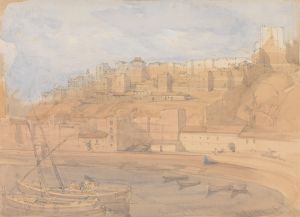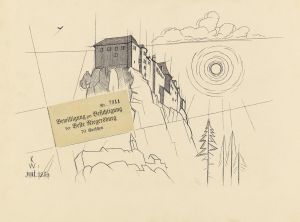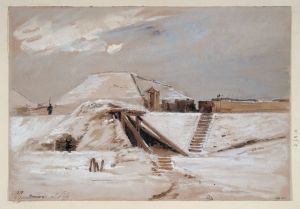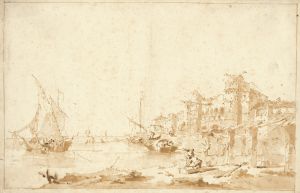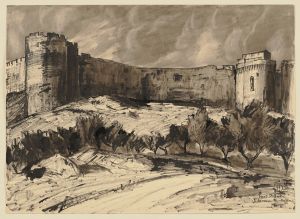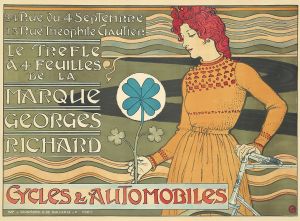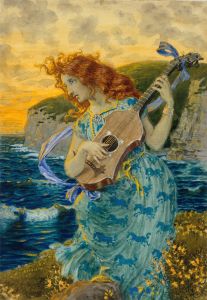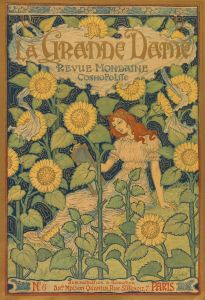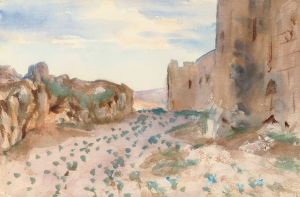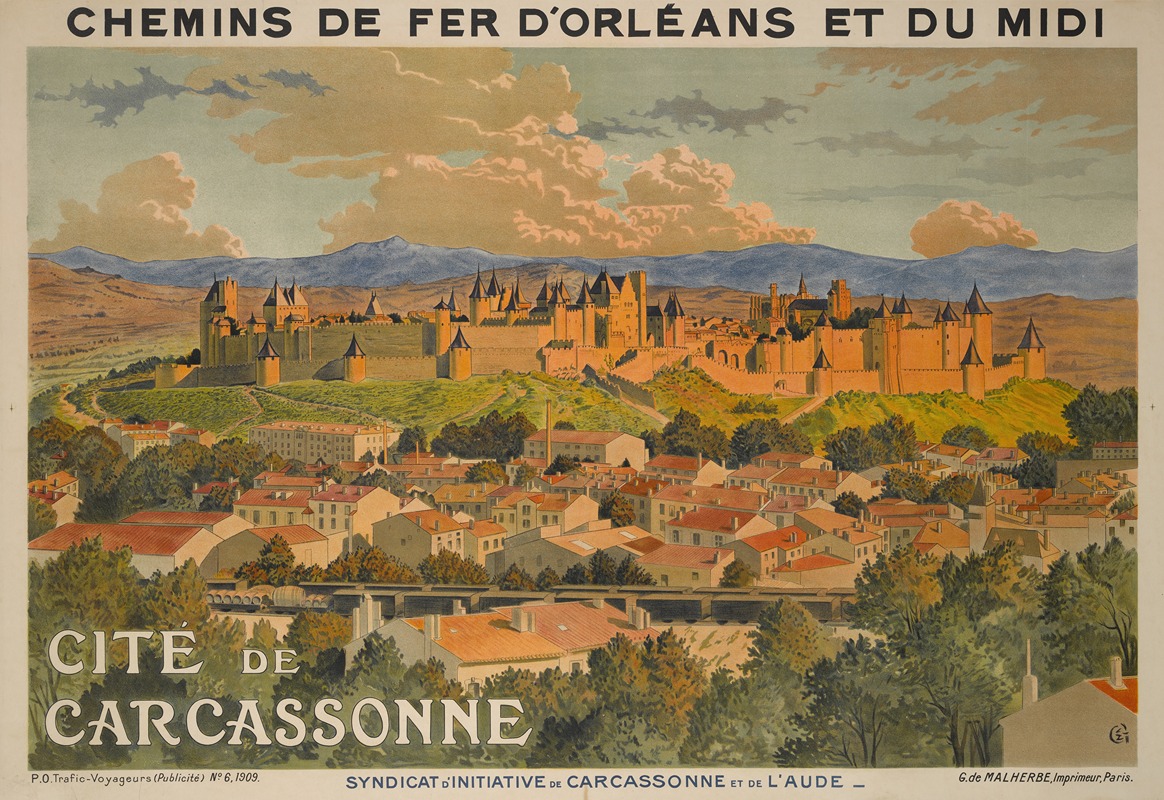
Cité de Carcassonne
A hand-painted replica of Eugène Grasset’s masterpiece Cité de Carcassonne, meticulously crafted by professional artists to capture the true essence of the original. Each piece is created with museum-quality canvas and rare mineral pigments, carefully painted by experienced artists with delicate brushstrokes and rich, layered colors to perfectly recreate the texture of the original artwork. Unlike machine-printed reproductions, this hand-painted version brings the painting to life, infused with the artist’s emotions and skill in every stroke. Whether for personal collection or home decoration, it instantly elevates the artistic atmosphere of any space.
Eugène Grasset's Cité de Carcassonne is a notable artwork created by the Swiss-born French artist and designer, who is widely regarded as one of the pioneers of the Art Nouveau movement. Grasset, active during the late 19th and early 20th centuries, was known for his diverse body of work, which included illustrations, posters, decorative arts, and paintings. His artistic style often combined medieval and Gothic influences with the flowing, organic forms characteristic of Art Nouveau.
The painting Cité de Carcassonne depicts the medieval fortified city of Carcassonne, located in the Aude department of southern France. Carcassonne is renowned for its well-preserved medieval architecture, including its double-walled fortifications and numerous towers, which have made it a UNESCO World Heritage Site since 1997. Grasset's depiction of the city captures its historic and architectural grandeur, reflecting his interest in medieval themes and his ability to blend historical accuracy with artistic stylization.
While specific details about the creation of Cité de Carcassonne are limited, the work is consistent with Grasset's broader artistic focus on historical and decorative subjects. His fascination with medieval art and architecture is evident in many of his works, and his portrayal of Carcassonne likely reflects his admiration for the city's historical significance and aesthetic appeal.
Grasset's contributions to the Art Nouveau movement extended beyond painting; he was also a prolific designer of posters, textiles, and furniture. His work often featured intricate patterns, harmonious color palettes, and a strong sense of composition, all of which are likely present in Cité de Carcassonne. The painting serves as an example of his ability to merge fine art with decorative sensibilities, a hallmark of his career.
Today, Eugène Grasset is remembered as a key figure in the development of modern graphic design and decorative arts. His works, including Cité de Carcassonne, continue to be appreciated for their artistic innovation and historical resonance. However, detailed information about the painting's current location, provenance, or specific historical context remains scarce in available records.





